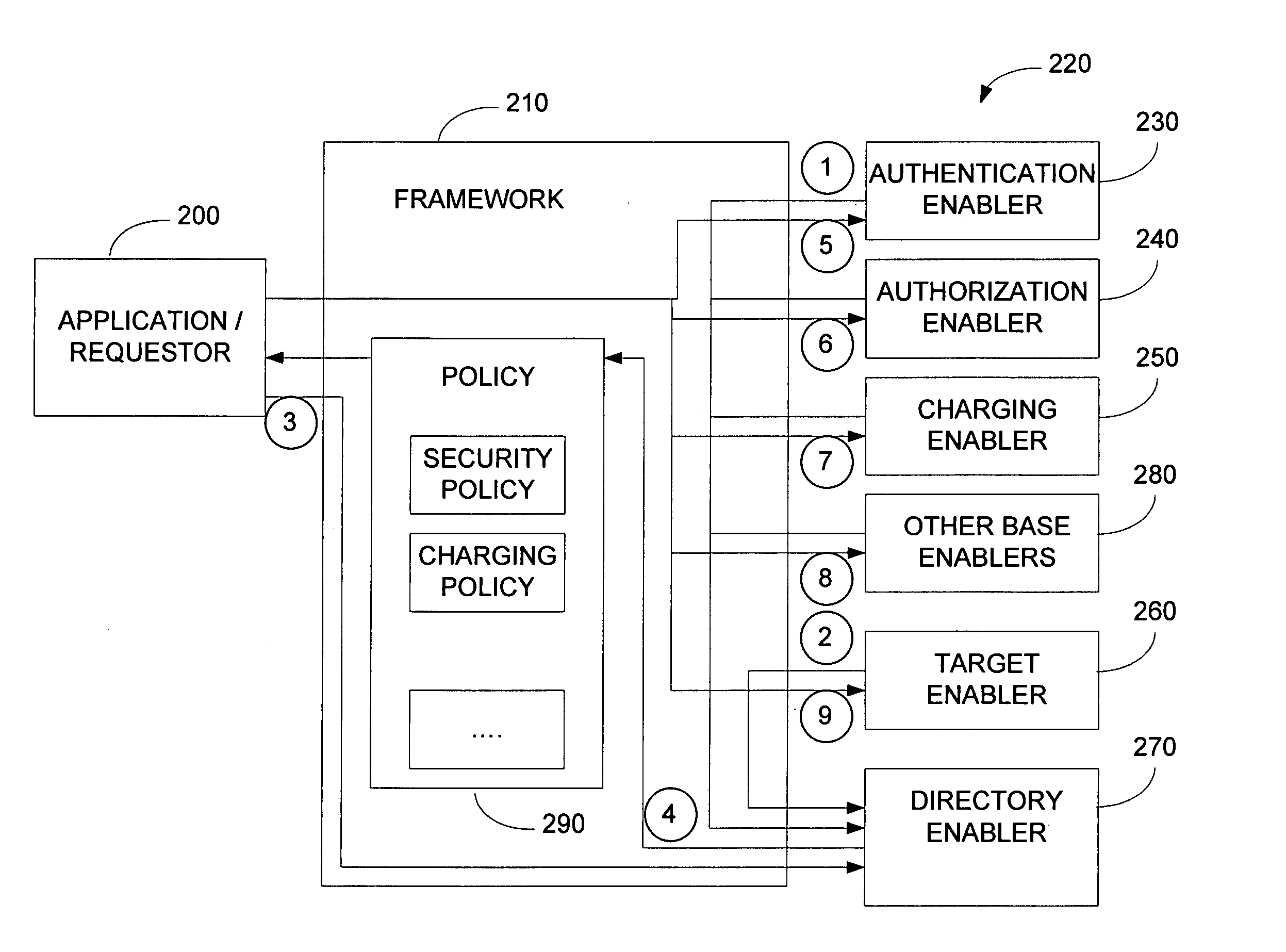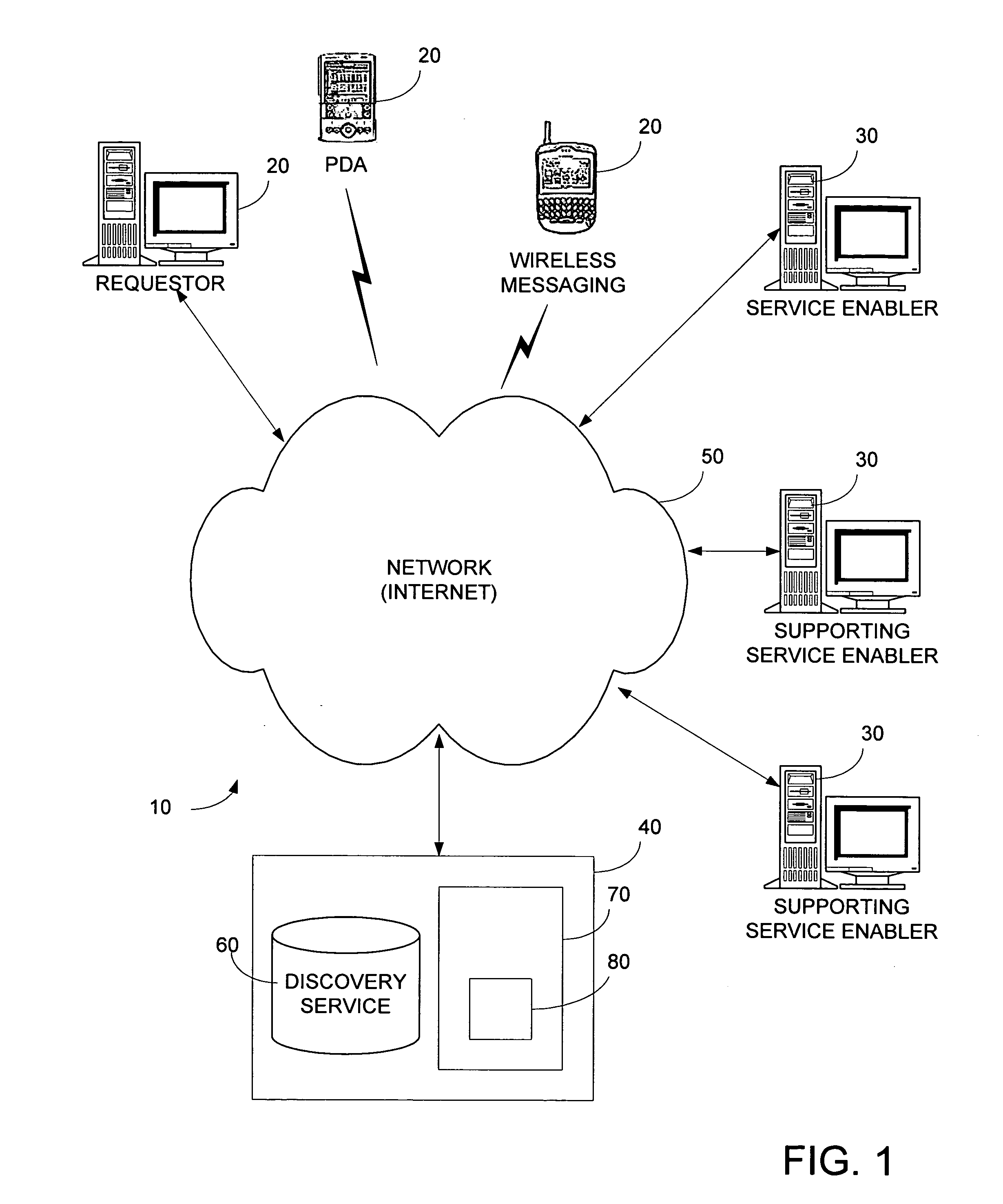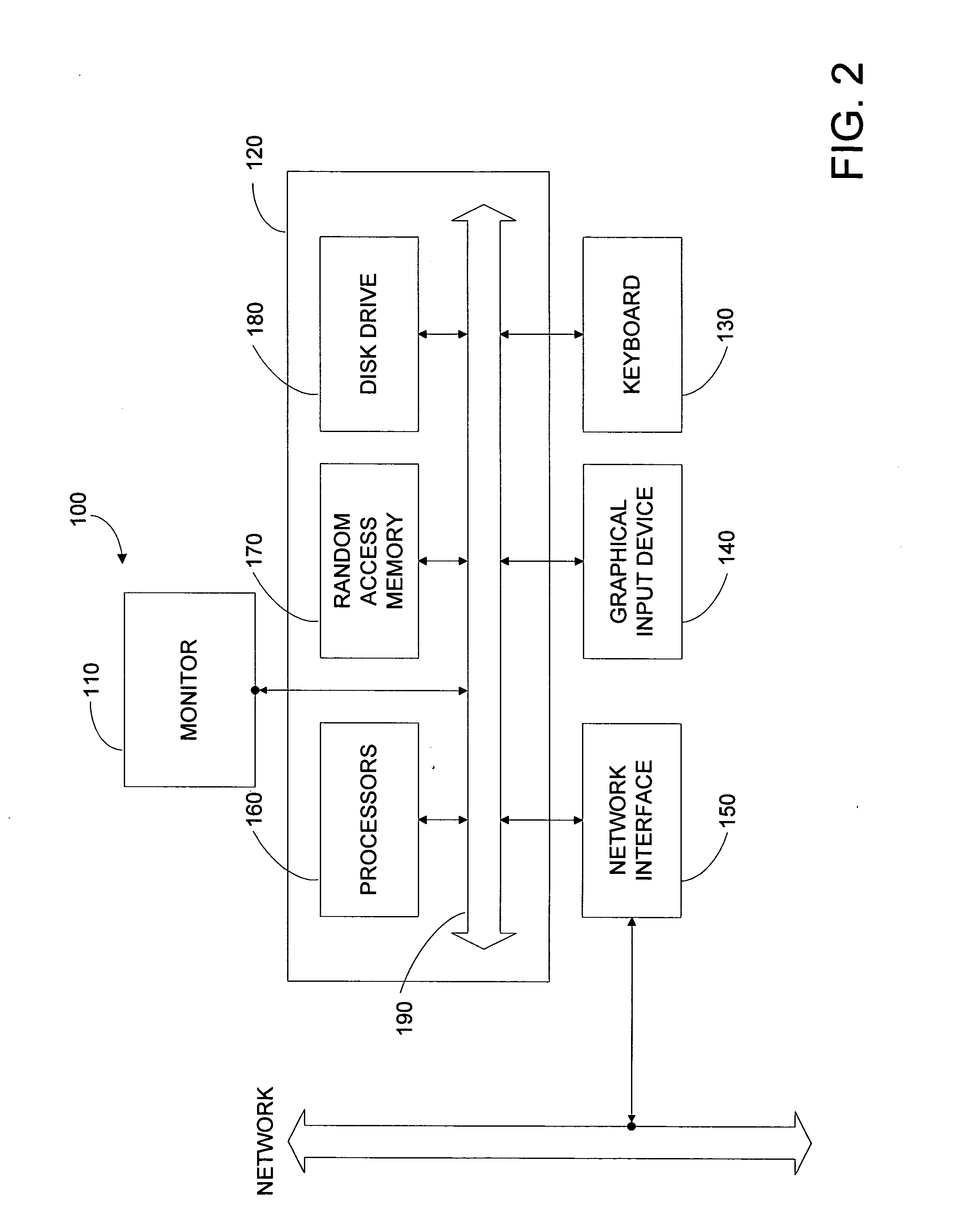Method and apparatus for supporting service enablers via service request handholding
a technology of service request and service request, applied in the field of web services, can solve the problems of not considering the validation of existing services, not giving consideration to the service provider, and little incentive for developers to develop supporting functions that could be used by other developers,
- Summary
- Abstract
- Description
- Claims
- Application Information
AI Technical Summary
Benefits of technology
Problems solved by technology
Method used
Image
Examples
Embodiment Construction
[0028] The following definitions are used herein.
[0029] Conditions are called execution policies and they are defined as: Execution Policies: The expression of a set of conditions that must be enforced (executed and validated) on any request or exchange that takes place. These conditions involve policy assertions and logic expression between policy assertions.
[0030] Policy assertions: An individual preference, requirement, capability or other property that can be evaluated or executed.
[0031] Policies: A definite goal, course or method of action to guide and determine present and future decisions. “Policies” are implemented or executed within a particular context. Such a rule is supposed to be used for receiving a set of parameters and producing a result. A static policy is a particular case of policy assertions that must be evaluated.
[0032] Policy Workflows: The expression of a series of assertions that must be executed. Workflows are particular cases of execution policies where...
PUM
 Login to View More
Login to View More Abstract
Description
Claims
Application Information
 Login to View More
Login to View More - R&D
- Intellectual Property
- Life Sciences
- Materials
- Tech Scout
- Unparalleled Data Quality
- Higher Quality Content
- 60% Fewer Hallucinations
Browse by: Latest US Patents, China's latest patents, Technical Efficacy Thesaurus, Application Domain, Technology Topic, Popular Technical Reports.
© 2025 PatSnap. All rights reserved.Legal|Privacy policy|Modern Slavery Act Transparency Statement|Sitemap|About US| Contact US: help@patsnap.com



